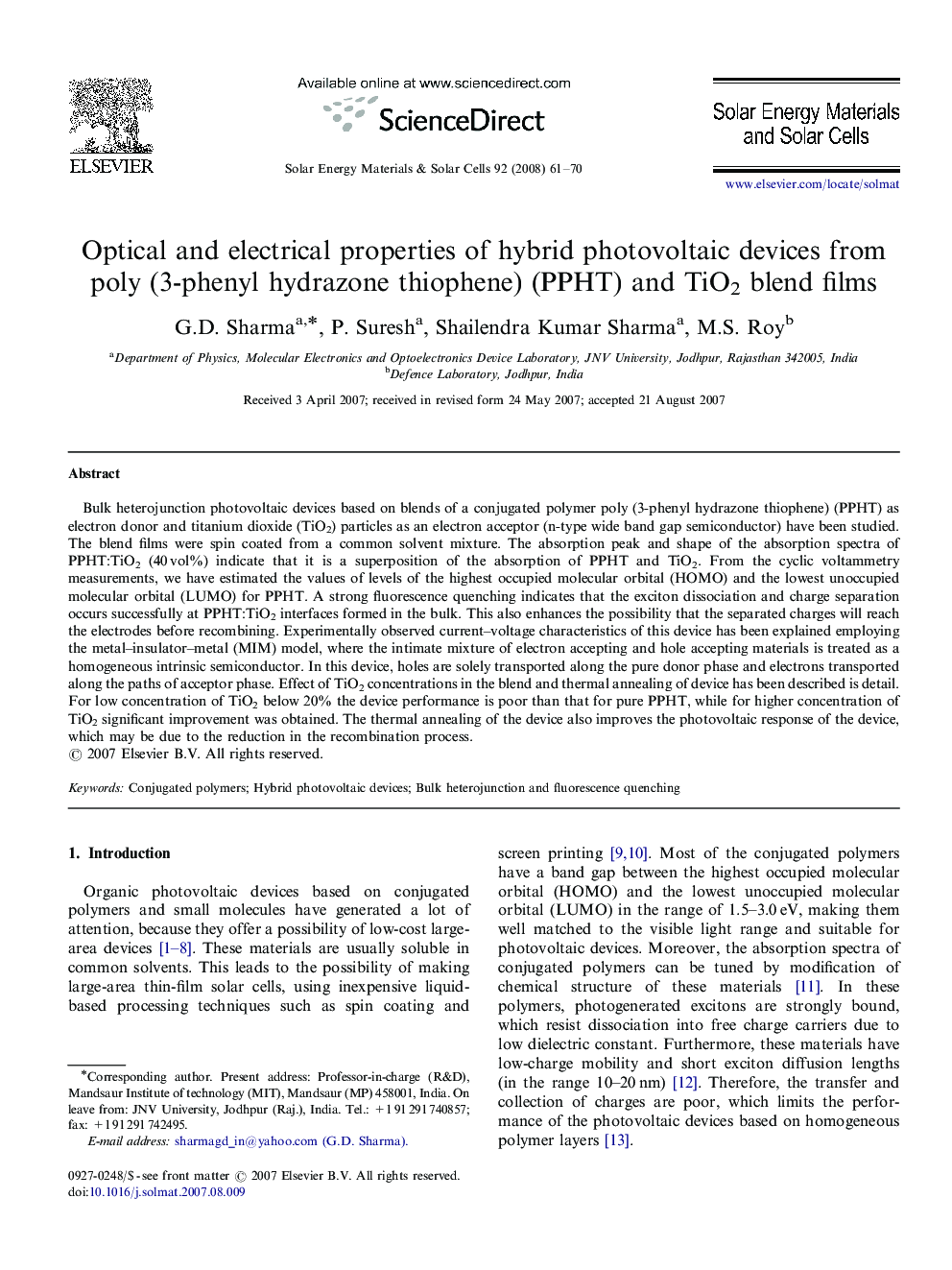| Article ID | Journal | Published Year | Pages | File Type |
|---|---|---|---|---|
| 80186 | Solar Energy Materials and Solar Cells | 2008 | 10 Pages |
Bulk heterojunction photovoltaic devices based on blends of a conjugated polymer poly (3-phenyl hydrazone thiophene) (PPHT) as electron donor and titanium dioxide (TiO2) particles as an electron acceptor (n-type wide band gap semiconductor) have been studied. The blend films were spin coated from a common solvent mixture. The absorption peak and shape of the absorption spectra of PPHT:TiO2 (40 vol%) indicate that it is a superposition of the absorption of PPHT and TiO2. From the cyclic voltammetry measurements, we have estimated the values of levels of the highest occupied molecular orbital (HOMO) and the lowest unoccupied molecular orbital (LUMO) for PPHT. A strong fluorescence quenching indicates that the exciton dissociation and charge separation occurs successfully at PPHT:TiO2 interfaces formed in the bulk. This also enhances the possibility that the separated charges will reach the electrodes before recombining. Experimentally observed current–voltage characteristics of this device has been explained employing the metal–insulator–metal (MIM) model, where the intimate mixture of electron accepting and hole accepting materials is treated as a homogeneous intrinsic semiconductor. In this device, holes are solely transported along the pure donor phase and electrons transported along the paths of acceptor phase. Effect of TiO2 concentrations in the blend and thermal annealing of device has been described is detail. For low concentration of TiO2 below 20% the device performance is poor than that for pure PPHT, while for higher concentration of TiO2 significant improvement was obtained. The thermal annealing of the device also improves the photovoltaic response of the device, which may be due to the reduction in the recombination process.
